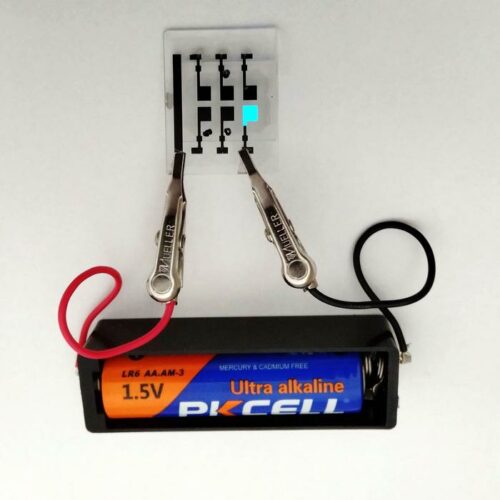Tokyo Tech researchers have showcased an upconversion OLED with blue fluorescence that emits at just 1.47 V, offering potential improvements for commercial displays.

Blue light is essential for smartphones, large-screen displays, and various lighting applications. However, crafting efficient blue organic light-emitting diodes (OLEDs) is challenging due to the elevated voltage needed to function. Traditional blue OLEDs usually demand about 4 V to achieve a luminance of 100 cd/m2, which exceeds the industry target of 3.7 V— the voltage of lithium-ion batteries frequently found in smartphones. As such, there’s a pressing demand for new blue OLEDs that can run on reduced voltages.
In collaboration with the University of Toyama, Shizuoka University, and the Institute for Molecular Science, researchers from the Tokyo Institute of Technology and Osaka University have showcased a unique OLED device. This device boasts an impressively low turn-on voltage of 1.47 V for blue emission, with a peak wavelength at 462 nm (2.68 eV).
The materials selected for this OLED profoundly impact its turn-on voltage. Specifically, the device employs NDI-HF as its acceptor, 1,2-ADN as its donor, and TbPe as the fluorescent dopant. The device’s operation hinges on an upconversion (UC) mechanism. In this process, holes and electrons are directed into the donor (emitter) and acceptor (electron transport) layers. They merge at the donor/acceptor (D/A) boundary, resulting in a charge transfer (CT) state.
The energy from the CT state is then selectively channelled to the emitter’s low-energy first triplet excited states, leading to the emission of blue light. This happens due to creating a high-energy first singlet excited state via triplet-triplet annihilation (TTA). Given that the CT state’s energy is significantly lower than the emitter’s bandgap energy, the upconversion mechanism paired with TTA drastically reduces the voltage needed to excite the emitter. Consequently, this UC-OLED achieves a luminance of 100 cd/m2, on par with standard displays, at a mere 1.97 V.
The researchers have introduced an innovative OLED that emits blue light at an exceptionally low turn-on voltage, employing a common fluorescent emitter frequently used in mainstream displays. The advancement represents a considerable stride in aligning with the commercial standards for blue OLEDs. The study underscores the need to refine the D/A interface design to manage excitonic processes, offering potential benefits for OLEDs, organic photovoltaics, and various organic electronic devices.






